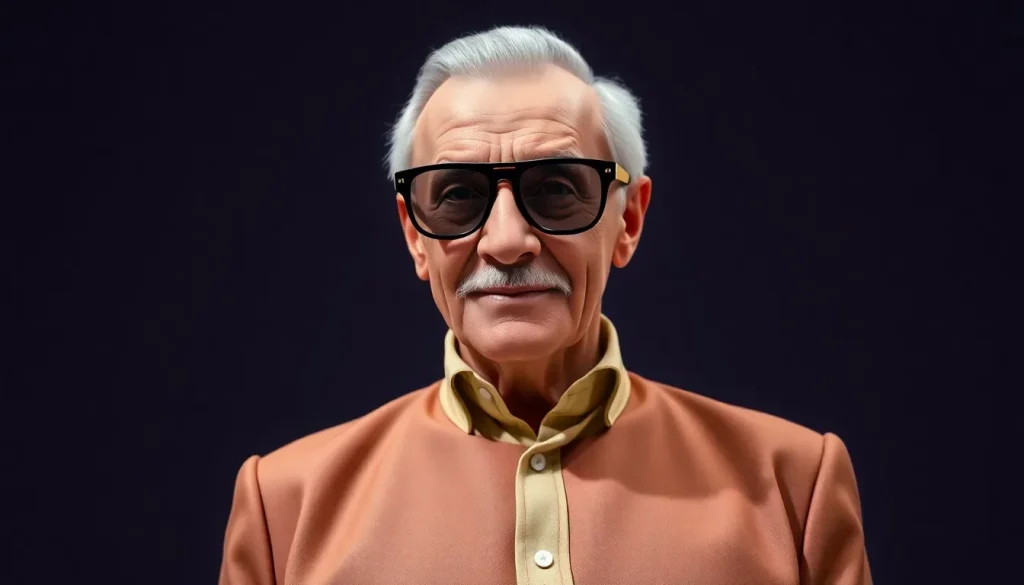LA Comic Con's AI-Powered Stan Lee Hologram: A Smart Move

In a groundbreaking move for the world of fandom and technology, the LA Comic Con has introduced an AI-powered hologram of the legendary Stan Lee, a figure synonymous with Marvel Comics. This initiative has sparked a whirlwind of debate among fans and critics alike, raising questions about the ethics and implications of using artificial intelligence to recreate the likeness of a beloved figure. As the veil of excitement and skepticism unfolds, we delve into the intricacies of this innovative endeavor.
Fans can now interact with a life-sized holographic representation of Stan Lee, available for a fee at the convention. This technological marvel aims to allow attendees to engage with an avatar that embodies the spirit and personality of the late comic book titan, but reactions to this idea have been mixed, often veering toward criticism.
- What sparked the creation of the Stan Lee hologram?
- “It’s going to have to be really good or we’re all going to say no”
- How does the AI technology work?
- Concerns about authenticity and ethics
- Fan reactions and public sentiment
- “The only words that are gonna be in Stan’s mouth are Stan’s words”
- Preparing for the LA Comic Con debut
What sparked the creation of the Stan Lee hologram?
The concept of an AI-driven hologram is not entirely new to the comic-con scene. Past conventions have experimented with interactive holograms, including a notable instance in 2019 when the convention featured a holographic character named Boffo the Bear. This 7-foot-tall animated figure was powered by a live actor's performance, demonstrating the potential of interactive technology in engaging audiences.
However, the leap to an AI-powered avatar represents a significant advancement in this technology. Chris DeMoulin, CEO of the company behind LA Comic Con, recognized the advancements in AI technology and sought to create a hologram that could simulate Stan Lee's essence by drawing from his extensive body of work, including interviews, panels, and other recorded material.
“It’s going to have to be really good or we’re all going to say no”
DeMoulin’s approach to this project was careful and considered. He reached out to Bob Sabouni, who manages the Stan Lee Legacy brand, to ensure that they could create something that would respect Lee's legacy. Sabouni's response was straightforward: "It's gonna have to be really good or we're all going to say no."
To achieve this high standard, DeMoulin collaborated with Proto Hologram and Hyperreal, companies specializing in creating immersive digital experiences. Their mission was to develop a model that could accurately portray Lee's unique style of communication while remaining true to his words.
How does the AI technology work?
The technology behind the hologram is intricate, as it involves training AI models on a vast array of content related to Stan Lee. This content includes decades' worth of interviews, convention panels, and written materials. Here are some critical aspects of how the hologram operates:
- Content Training: The AI model was trained using a rich dataset of Lee's past comments and interactions, ensuring that the responses are authentic to his character.
- Interactive Experience: Fans will be able to engage in conversations with the hologram, asking questions related to the Marvel universe, with responses crafted to feel genuine and representative of Lee's persona.
- Content Governors: To maintain appropriateness, the system has built-in checks to prevent the hologram from engaging in off-topic discussions or generating unrelated content.
Concerns about authenticity and ethics
As with any use of technology that involves recreating a deceased person’s likeness, ethical concerns abound. Critics have raised alarms about the potential exploitation of a beloved figure's image. DeMoulin has repeatedly emphasized that the intention behind the hologram is not to replace Stan Lee but to honor his legacy and provide fans with a unique way to engage with the Marvel universe.
“We are not trying to bring Stan back from the dead,” DeMoulin asserted. “This avatar is not going to start doing commercials to advertise other people's products.” His aim is to create a digital guide that facilitates discussions about the Marvel legacy rather than serve as a commercial tool.
Fan reactions and public sentiment
The announcement of the Stan Lee hologram has resulted in a polarized response among fans:
- Supporters: Some fans view it as a tribute to Lee, providing a way to keep his spirit alive and educate new generations about Marvel.
- Critics: Others have expressed outrage, calling the hologram “demonic” and “disrespectful,” highlighting the discomfort of interacting with a digital version of someone who has passed away.
- Neutral Parties: Many individuals are curious yet cautious, wishing to see the hologram before forming a definitive opinion.
To further the conversation, a popular Reddit thread saw numerous fans dissecting the implications of this technology, with many agreeing that while innovation is exciting, it must come with respect for the individuals being replicated.
“The only words that are gonna be in Stan’s mouth are Stan’s words”
One of the significant concerns surrounding AI technology is its tendency to generate inaccurate or misleading information. DeMoulin acknowledged these worries but reassured that the team has thoroughly tested the hologram to ensure it remains true to Stan Lee's authentic voice and persona.
“The only words that are gonna be in Stan's mouth are Stan's words,” he explained. The hologram has been programmed to respond based solely on verified content from Lee's life, with moderators present to facilitate the Q&A sessions and ensure that the environment remains enjoyable and relevant to fans.
Preparing for the LA Comic Con debut
As the LA Comic Con approaches, excitement and apprehension grow. The hologram's debut will serve as a litmus test for public reception. DeMoulin expressed confidence that once attendees witness the hologram in action, skepticism may fade.
“If we do it and thousands of fans interact with it and they don't like it, we'll stop doing it,” he stated, highlighting a willingness to adapt based on fan feedback. The ultimate goal is to create an experience that resonates with the community and honors Stan Lee's remarkable legacy.
As the lines between technology and remembrance blur, the Stan Lee hologram stands as a testament to innovation and a tribute to one of the most influential figures in comic history. Whether this initiative will be embraced or shunned remains to be seen, but it undeniably opens up a broader dialogue about the future of digital representations of our cultural icons.
For more insights into this fascinating topic, check out this video where industry experts discuss the implications of AI in recreating beloved figures:




Leave a Reply